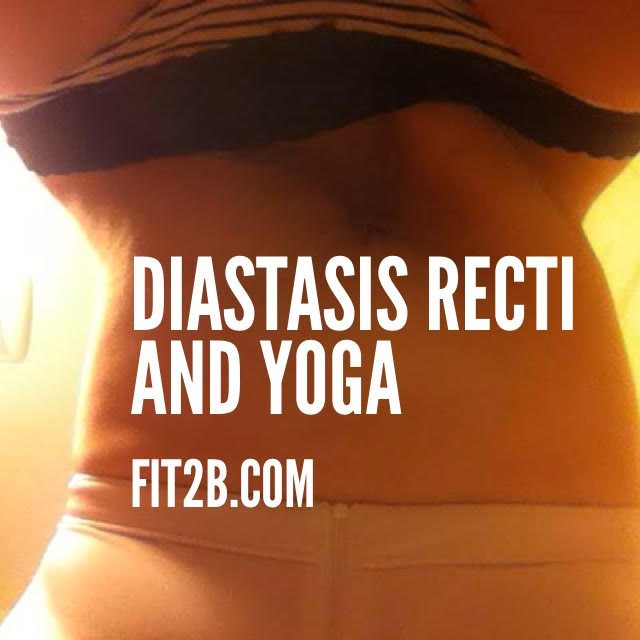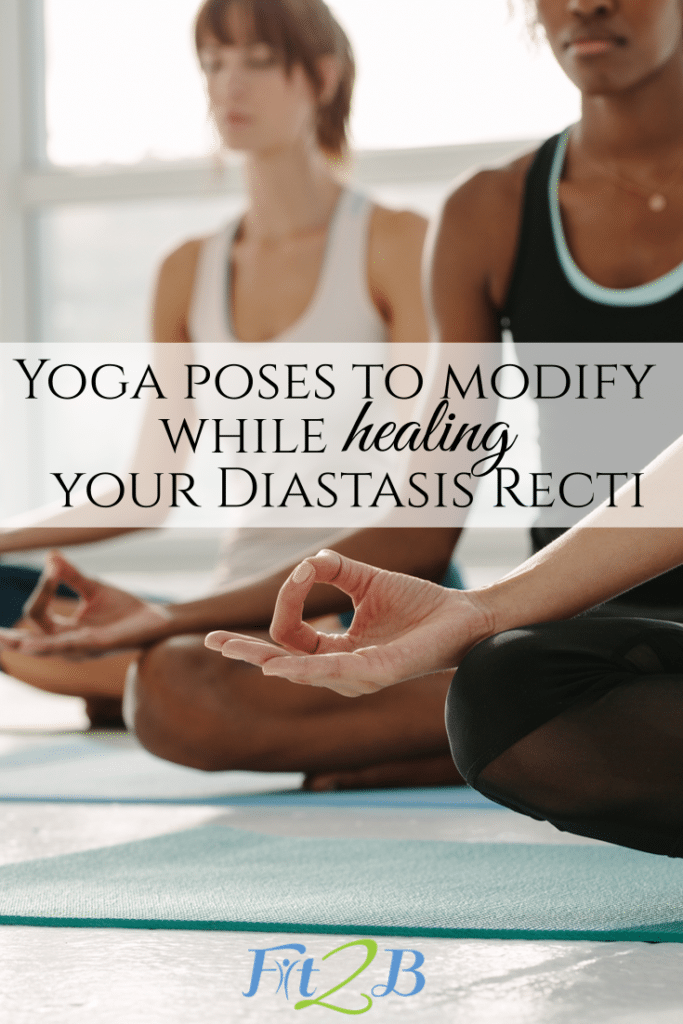Blog
Diastasis Recti and Yoga: Shocking Photo
Many people with weak cores and back pain turn to yoga for help, but if you have diastasis recti, many yoga poses should be approached with caution. This shocking photo will hopefully help all of you better understand how DEEPLY a diastasis recti affects your abdominal’s appearance, function and integrity.

That is one my members who was horrified to feel a HOLE in her belly while doing downward dog. It is an authentic photo, not doctored or retouched in any way (or even turned right side up because she herself was upside down when she took it) except to add the words to protect our copyright.
When Emily wrote to me about what she was feeling with her diastasis recti (DR) while doing yoga, I asked her to put her phone on the ground and take a picture of what was happening. You can see her underwear at the top of the image, her zip-up sports bra at the bottom of the image, and the “hole” in her abs right between her navel and her panties. The way the hole is slanted is due to her obliques pulling to one side as she uses one hand to push the photo button on her phone.
The belly in the image does not have its transverse abdominus (TvA) engaged. When Emily did engage her TvA, things looked very different! She sent me a video to prove how my cues helped her keep her core engaged and aligned, and when she was successfully aligning and engaging (not bracing or bearing down or bulging) the fascia of her abs stayed more solid through her whole flow of motion. We are editing that video for use in several upcoming educational courses on our sites and a yoga teacher training.
After completing this blog, I sent it to Emily for her review, and she wrote back saying, “I’m so happy you’re using it! I’m hopeful that it will help many people and give a good visual as to the severity of what’s going on inside a broken tummy. I’ve had so many people contact me for help after baby because they know all I’ve been through (and of course I encourage them and send them straight to you and Kelly 🙂 I’ve come a long way since then! I’m so thankful for you, Beth! Oh where would I be without the guidance you gave me those few years ago?”
If you are a consumer of yoga
Please check your belly for a DR if your yoga practice has been making your belly worse or increasing your symptoms of low back pain, prolapse, incontinence, etc. Many instructors teach a “bracing” style of breathing that is detrimental to your core if you have these issues. A simple change in breathing mechanics and timing of your breath can make a huge difference. Here at Fit2B we teach this to new members right away in our Foundational Five section of videos and resources, and we have a yoga section that leads you through all the modifications and progressions from basic through intermediate, so that you’re ready for more challenging poses in “real” studios. Joining Fit2B for a few months can really make a difference in your practice as you learn so much about your core!
If you are a yoga instructor
I hope that seeing this helps you understand the magnitude of what I, as a core fitness specialist, see as a real health issue that affects its victims on every level. I strongly recommend that you join this site – Fit2B – for a month or two and work your way through our “Intro to Yoga” path so you can learn some modifications and breathing cues needed to protect a damaged tummy from a wider diastasis recti. I also strongly recommend that you take The Tummy Team’s continuing education courses for professionals. Meanwhile, I have been asked to provide a lesson on DR modifications for a new 200-hr instructor training that an elite yogini friend of mine is writing. Keep your ears open for that…
 Types of poses that are harder on a traumatized tummy
Types of poses that are harder on a traumatized tummy
Those who need the most help with their tummies are those who need to be the most cautious with their tummies. A history of surgeries such as hernia repair or cesarean birth, diastsis rectus abdominus, existence of supervised umbilical or inguinal hernia that doesn’t require surgery, distension from gastric upset and chronic gut inflammation, excess belly fat… ALL of those things can be exacerbated by many common yoga poses such as:
- Heart openers: The flaring ribs pull on the connective tissue of a healing core when the pectorals are so tight that the ribs must thrust forward to allow the opening to take place.
- Spinal hyperextensions: Overstretches the abs at a time when it’s temporarily more important to maintain neutral spine to allow for approximation of the abdominals.
- Inversions: The transition into inversions often creates an enormous amount of intra-abdominal pressure. Once someone is upside down, proper alignment and breathing can regulate the intra-abdominal pressure correctly, but again, it’s the transitions that are tricky. And many instructors don’t teach transitions from move to move correctly or safely.
- Unsupported prone poses: When the belly hangs down into empty space, there are no bones to support the weight of the internal organs pressing down on thinned, weakened fascial tissues. Your ribs protect your heart and lungs, but no bones protect your stomach and keep things in. When your abdominal fascia isn’t thick and healthy, we need to get the pressure off that area at every opportunity until it thickens and regains function.
- Slanted sitting poses such boat or V-sit: Without proper attention to breath and alignment here, and with the epidemic of tight hamstrings pulling sacrums under, most people will over-recruit their rectus abs, psoas and other hip flexors to maintain upright positions like these, resulting in belly-bulging and more pressure outward which re-opens diastasis.
- Crunches and curling motions: Any type of spinal curl typically causes the belly and pelvic floor to bulge. While it’s possible to crunch in a manner that doesn’t cause this bulging, the lengthy amount of time that people already spend in a hunched, crunched position often makes any move like this a waste of time {especially for tired, slumped mums who already struggle to sit up straight} when there are better moves to train proper alignment and core recruitment. We only have them for an hour or so, right?
- Big Twists: The picture itself is evidence of how the obliques pull the DR wider on one side when she switched her weight into one hand to take the picture.The way the obliques pull on the linea alba in big twisting motions makes them something to avoid during the healing phase.
I know… It feels like I just outlawed everything, doesn’t it? But I didn’t. An experienced teacher or yogi will see the loopholes and find ways to modify just about every position to be “TummySafe” for those with abdominal aggravations.
Most importantly, protecting the core boils down to exhaling to engage before the exertion AND ALSO alignment. Elite yogis with healthy abs and spines and terrific flexibility can twist themselves into pretzels, sure! But someone with an injury needs to be more careful. They need to establish stability before mobility. And if the core is broken, then stability isn’t happening, and all our attention must go toward rebuilding that central pivot-slash-stability point.
Indeed, neutral alignment should always trump anything else when diastasis recti and back pain are present. Why not teach more hip openers and less heart openers just for a while, right? And then once the dysfunction is resolved, then one can begin working on adding gentle hyperextensions, modified plank poses, inversions, and such.
There is so much that I can write and speak to on this, but I’m saving that for the lesson I’m writing for the teach training curriculum, and I’m keeping things simple for the blog here. Feel free to comment with any questions or book a private consult with me to pick my brain. But most of my brain is in my blogs and in my workout videos. I teach while I teach 😉
Click HERE to learn more about membership access to Fit2B’s online workouts today!

I also have this hole at my belly button and I think my DR is a hernia that needs lots of work. I’ve chosen to keep away from everything but warrior type poses to keep my hips stretched out so as not to pull on the pelvic floor until I’m done nursing my twins. Which will probably never happen. 😉
I was wondering if you have some yoga video or poses we could do, so that we don’t feel like we’re not doing jack! I am nursing my 6 month old and currently working on my breathing in otrder to heal my DR (which is not like the picture, but more of a 5 month pregnant belly) ,but would like to learn yoga as well. Please help! Thanks!
Pingback: Fit2B Teaching Other Teachers | Fit2B Studio
Pingback: 6 Exercise Tips for Diastasis Recti | The Tummy Team